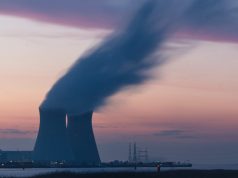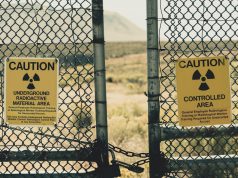INSIGHT by the Federal Ministry for Environment, Nature Conservation, Nuclear Safety and Consumer Protection, Germany
Emsland, Isar 2 and Neckarwestheim 2 nuclear power plants to be taken off the grid
Operations at the three last nuclear power plants in Germany – Emsland in Lower Saxony, Isar 2 in Bavaria and Neckarwestheim 2 in Baden-Württemberg – will be shut down by 15 April 2023 at the latest. This will mark the end of nuclear power use in Germany, leading to a significant increase in nuclear safety. The very high level of energy security in Germany will be guaranteed. Nuclear safety challenges will remain for decades to come.
Steffi Lemke, Federal Minister for the Environment and Nuclear Safety, commented: “The phase-out of nuclear power makes our country safer; ultimately, the risks of nuclear power are uncontrollable. I would like to thank everyone who played a part in making the phase-out a reality, and all staff at the nuclear power plants for working conscientiously to operate and dismantle the plants. We now face decades full of challenges before we can safely and responsibly dispose of our nuclear legacy. But switching off the final three nuclear power plants will usher in a new era in energy production. We will continue working on solutions for a repository for nuclear waste and focussing all our efforts on the expansion of renewable energy.”
Robert Habeck, Federal Minister for Economic Affairs and Climate Action, said: “By phasing out nuclear power, we are implementing the decision taken by the CDU/CSU and FDP in 2011. As stipulated in the Atomic Energy Act, Emsland, Neckarwestheim 2 and Isar 2 will be shut down on 15 April 2023 and subsequently dismantled. Germany’s energy security is and continues to be ensured; it remains very high compared with the situation in other countries around the world. Together, we have managed to make sure the gas reservoirs are well stocked, and have built new LNG terminals along Germany’s northern coast. Also, we have taken further steps to boost the performance of Germany’s electricity grids. And, finally, the massive expansion of renewable energy is delivering additional security. In 2030, we want to generate 80 percent of our electricity from renewable energy. We are now putting the policies in place for this and adapting the necessary legislation.”
The accelerated nuclear phase-out was legally adopted in 2011 in broad consensus. Plans to extend the operating lives of nuclear power plants agreed in the previous year were scrapped. High-level radioactive waste on a scale of around 500 casks for storage and transport of radioactive materials (Castor) was avoided as a result.
In autumn 2022, the German government and Bundestag decided to permit additional stretch-out operation up to 15 April 2023 at the latest for the three nuclear power plants Emsland, Isar 2 and Neckarwestheim 2. This stretch-out operation has not produced any additional high-level nuclear waste. In accordance with the Atomic Energy Act, nuclear power plants must now be decommissioned and dismantled without delay. The first application for decommissioning for Neckarwestheim 2 was approved at the beginning of April.
A range of studies by the transmission system operators and the Bundesnetzagentur show that the very high level of energy security in Germany will continue to be guaranteed. In future, an increasing share of electricity from renewable sources will displace and replace conventional power generation. The German government has taken a number of measures to secure energy supply in recent months. Expansion of renewable energy is being vigorously pursued, power grids are being expanded. Existing transport capacity is being used more efficiently. Existing power plants can increase their power generation and at the same time there will be greater flexibility regarding electricity consumption to make optimal use of renewable energy. The entire energy system will shift to renewables with the clear goal of climate neutrality by 2045.
The use of nuclear power in Germany began with the first Atomic Energy Act of 1959. The first nuclear power plant for electricity generation was the Kahl experimental plant, which started operating in 1960. In total, around 27,000 cubic meters of high-level radioactive waste was generated by the operation of Germany’s reactors. A large share of the approx. 300,000 cubic meters of low and intermediate-level waste to be disposed of in the Konrad repository also originates from the operation of nuclear power plants and nuclear industry facilities. The aim now is to complete the nuclear phase-out, including dismantling, to make progress in the search for a repository for high-level radioactive waste and to find permanent solutions for low and intermediate-level waste.
| All opinions expressed are those of the author and/or quoted sources. investESG.eu is an independent and neutral platform dedicated to generating debate around ESG investing topics.







